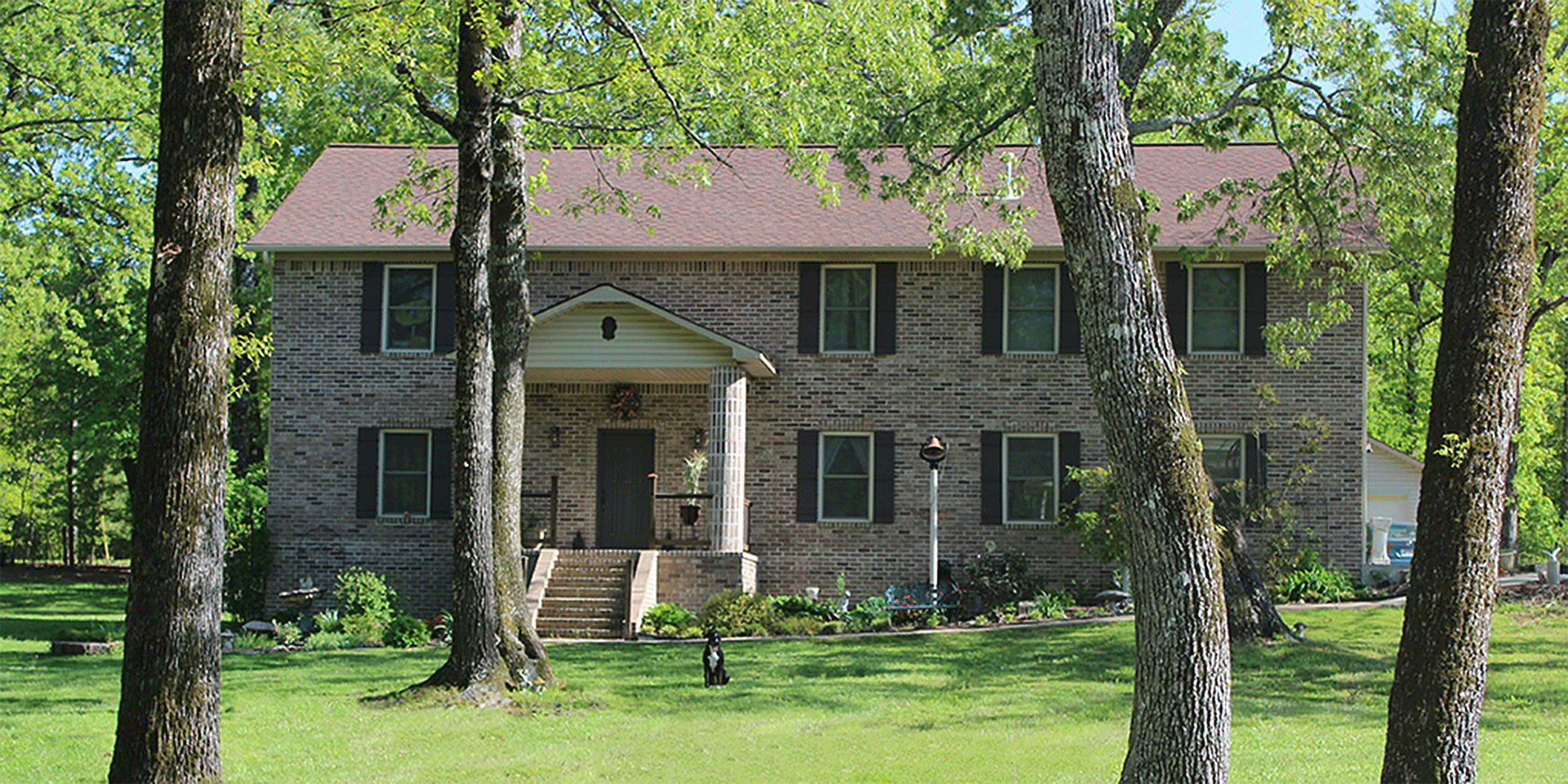Some houses allow you to read the owners’ story on their walls and through their windows. Although it happens less and less often, the most beautiful houses are built by those who mean to live in them. Cara Brookins and her children know very well how every beam or window in their house was put up, because they built it together.
The year 2007 found Cara divorced for the second time, with four children to support and few prospects for the future. Her first marriage had ended because her husband, who had paranoid schizophrenia, had become violent and dangerous to their children. Her second husband, whom she had thought was a strong and balanced man, able to help them overcome the traumas of the past, also turned out to be very violent and abusive.
Traumatic childhood experiences leave marks that are difficult to heal, and Cara could see how difficult it was for the children to endure the situation. They had become quiet, full of hatred and fear. They didn’t laugh like they used to, and communication between them was non-existent.
That year, to try and fix things, Cara organised a trip to the mountains for Thanksgiving, away from the small, cramped house where they had managed to settle after their divorce. On their way to the mountains, they passed by a house destroyed by a tornado. It had nothing but its frames in place. There were pieces of wood scattered everywhere. They stopped to see the ruins. And as she looked at its skeleton, Cara began to think the house could be easily rebuilt.
They all remember that evening when they spoke about the idea of rebuilding it. The thought delighted the whole family. Each one drew, on a notebook, what they would like a house of their own to look like. They even made a model out of twigs and fir cones, and their enthusiasm made Cara determined to take the idea more seriously. The problem was, she didn’t have the land or the money to carry out such a bold project. Despite this, for several months, she worked with Drew, her 15-year-old son, on a house plan. An architect approved the design. She then applied for a real-estate loan, which they received with great difficulty.
They bought a plot of land just outside of a small town in Arkansas, but the money they were left with was scarce, barely enough to buy building materials. They bought materials—with a certainty they now consider strange—feeling confident that they would be able to build the house themselves.
Cara had been working full time as an IT programmer, so she had no construction experience. They all started watching videos on YouTube about the different stages of building a house. In the evenings, they would watch many such videos, and during the day, after work and school, they got to work, trying to remember how things were done in those videos. They had also become acquainted with the employees from the supply store, who they would ask for advice.
Drew and Cara did the heavier work, and the younger girls took turns supervising their youngest brother. Roman, who was only 2 years old, was most delighted by the mud and sand in the yard. Hope, the eldest daughter, was 17 at the time, and Jada, only 11. When they were not caring for Roman, the girls carried water with buckets from a neighbour’s pond to make mortar for the foundation, the most difficult part of the construction.

After only a few days, Cara realised that their plan was crazy. She hid in different places to cry and feared that Drew and Hope would wake up one morning and tell her they did not want to continue. Although they now see it as a project of pride, building the house was then a project of shame for all. “We were ashamed that this was our only option: to build our house on our own.”
But the children never gave her the impression that they wanted to give up. “It was the first time they had gained a sense of power and control over their lives, and they knew they needed it.” After a few weeks, their relationships had improved considerably. Despite their fatigue, they were happier and more communicative. Cara recalls with a laugh that they would often just raise their hands and mutter something, and a sibling would know what kind of tool the other one needed. This was the thing that encouraged her to continue, because, after all the trauma she suffered, “you become very defensive in that place of low self-esteem and you have to learn to laugh and work together again.” The construction of the house managed to heal their wounds and rebuild their relationships.
For more complicated jobs, such as electrical installation, heating, and building the facade, they hired specialists, and sometimes they were helped by a firefighter friend whom they paid by the hour. Nobody did anything but work, go to school, and work on the house, because they had to finish it in just 9 months, in line with their agreement with the bank. And because they were afraid to do things in a slapdash fashion, they worked very hard to make sure everything went well. After a monumental effort, they managed to build a house of over 300 square meters, with 5 bedrooms, 3 bathrooms, a library and a kitchen, within the set time, to their own amazement—nevermind the amazement of others! At a final valuation, the house was worth half a million dollars, although its real value to the family far exceeded the bank’s valuation.
In March 2009, the family moved into the new house, already full of memories. Cara is grateful for the way those months of building the house turned her children into people with initiative and courage, who believe they can achieve whatever they set out to do. This year, their story became known thanks to the book Cara wrote[1] about the house they still live in, and their path to healing. “In the end, the most important thing I learned is that this story—our story—was never about a house.”
Andreea Irimia teaches computer science and technological education.



















